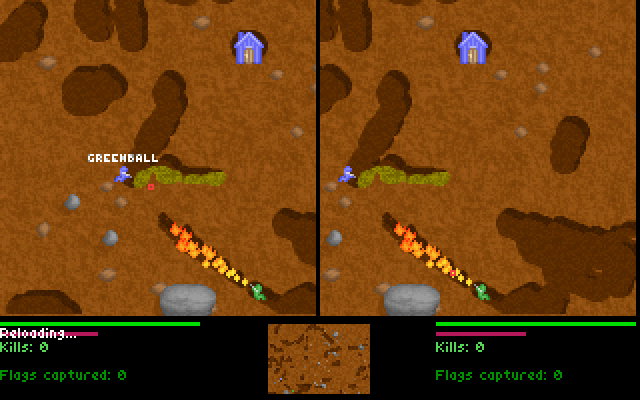Time never stops and neither does our look into the history of indie games. This week we’ve finally got past the awkward early years of the indie market and we can begin to delve deeply into the era that really turned it into the driving force it has become.
Trend Chasing
With the death of the Bulletin Board Systems and the subsequent lull in indie development it was a miracle that anything managed to survive. In many ways the 8-bit home computers can be thanked for keeping things going. While focus on modern powerful PC’s was almost all on Doom and its many clones, the older, slower hardware couldn’t quite pull off the super slick detail and fast scrolling.

That didn’t stop people from trying however. Despite the supposed death of older machines like the Commodore Amiga series, they actually survived far beyond their own obsolescence thanks to the skills of craft coders. Chasing after the Doom FPS dream led to indie title by the dozens, titles such as Nemac IV, Breathless, and Testament, all came far after the Amiga systems had their day, but kept the computers alive for their hardcore audiences.
On the PC the indie market took a different approach to confronting the mass popularity of Doom. Instead of trying to ape what massive companies were doing with their huge budgets, many indie developers opted instead to head in the opposite direction, and create games that you couldn’t find in the triple A market.
Indie Evolution

The Uplink website Circa 2001
A slew of games that hit the internet in the late 90s and early 2000s could not have been more different from the FPS’s being produced by the big companies. Titles like MoleZ and Liero re-imagined the strategic gameplay of Worms in their own ways, and both saw early distribution on the internet without the backing of a major publisher. Similarly sold was Uplink, a game about hacking the planet that was sold directly from the creators own website.
It wasn’t just strategy and action titles that this era’s indie developers managed to produce. The adventure game genre had been struggling since the bottom had fallen out of the market, and it was games such as Amanita Design‘s Samorost which kept it going. Cave Story managed to prove that there was life in pixel graphics still, remaining one of the best indie games ever made, and Alien Hominid proved that content creation websites like Newgrounds had some real staying power in popular culture.

Indie Games 3: Revelations
If there is one word that can sum up this era of indie games it is “Revelation”. It was the success of many of these early titles that spurred other future developers into creating their own games. As the 2000s passed the point of no return, the game industry had to prepare itself for an explosion of indie titles. With platforms like Steam and GOG giving much easier access to a digital store front, and a handful of hugely popular indie titles hitting the internet, it is no surprise that things started to take off.



